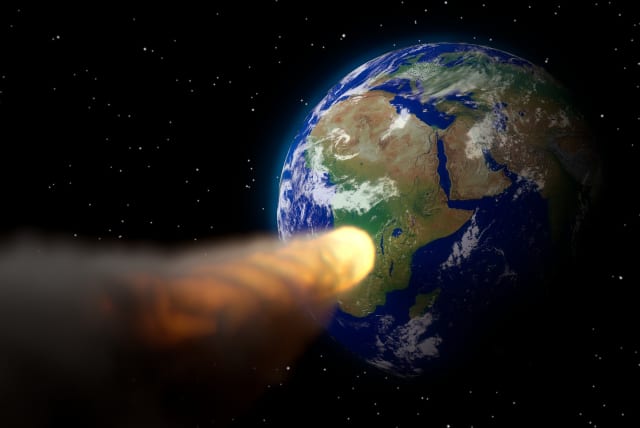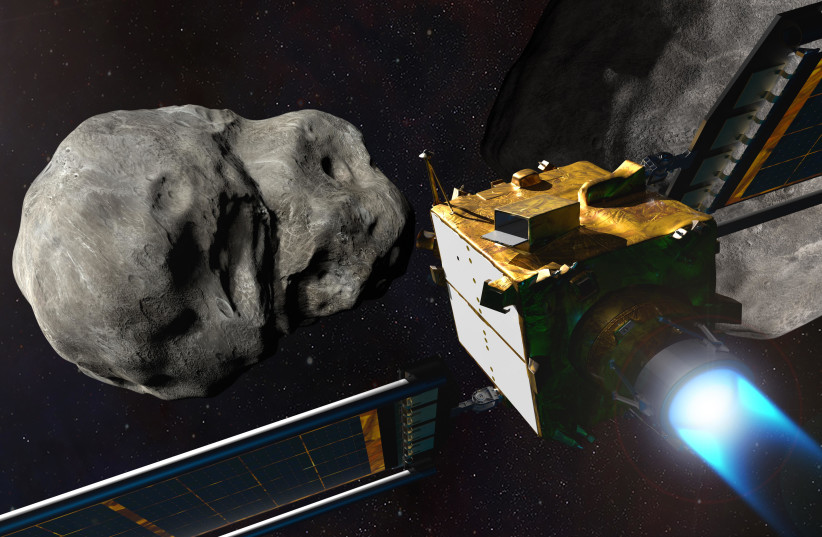Asteroid the size of 22 tuna fish to fly closer to Earth than the Moon - NASA

Asteroid 2023 DZ2 is set to fly very close to the Earth on Saturday and was initially feared to be on a collision course for Earth in 2026.
An asteroid the size of over 22 tunafish is set to skim past the Earth on Saturday in a very close flyby, according to NASA's asteroid tracker.
The asteroid in question has been designated 2023 DZ2 and was only discovered and identified this year, according to the Center for Near-Earth Object Studies (CNEOS) at NASA's Jet Propulsion Laboratory (JPL).
The newly discovered asteroid will be flying extremely close to Earth, making it the closest asteroid since 2019, and it may be visible to some people using telescopes and binoculars.
And for those asking in advance, the metric used is the total length of an Atlantic bluefin tuna fish at its maximum possible size.
Something's fishy here: How big is the asteroid coming toward Earth in 2023?
Asteroid 2023 DZ2 is estimated to be as much as 90 meters in diameter, which itself is certainly nothing to scoff at.
But just how much is 90 meters? Well, here's a more relatable comparison using one of the most popular foods in the world: Tuna.
The largest breed of tuna is the Atlantic bluefin tuna, which is a highly commercialized fish used heavily in the food industry. But what you might not know is that these fish are actually surprisingly enormous.
As noted by both the World Wildlife Fund (WWF) and the US National Oceanic and Atmospheric Administration (NOAA), Atlantic bluefin tuna are usually seen to be around two meters in length, but they can grow to up to a whopping four meters – meaning there are actually many cataloged asteroids that are smaller than a single tuna fish.
But this isn't one of those smaller asteroids, and at 90 meters, asteroid 2023 DZ2 is considerably larger than a fish. Assuming their maximum length of four meters, the asteroid's size is as much as over 22 Atlantic bluefin tuna fish lined up in a row mouth-to-tail.
But we can't be fin-nished without talking weight and speed, too. Atlantic bluefin tuna are also far heavier than one might think, and they can in fact weigh more than horses.
But suffice to say, a 90-meter-wide asteroid is likely going to be sufficiently heavier than even 22 of these massive tunas.
In terms of speed, these fish are also pretty quick, capable of reaching speeds of around 69 kilometers per hour. But of course, asteroid 2023 DZ2 is much faster, clocking in at over 2,800 kilometers per hour.
Is an asteroid going to hit Earth in 2023?
Asteroid 2023 DZ2 isn't going to hit Earth, but it's going to come very close.
According to NASA, 2023 DZ2 is classified as an Apollo-class asteroid, meaning its orbit overlaps with the Earth's orbit around the Sun. While at first, there were some fears that the asteroid could collide with Earth, further calculations quickly dismissed this possibility.
The current data shows that asteroid 2023 DZ2 will pass by Earth at a distance of around 175,000 kilometers.
That's very close, all things considered, cosmic scale or otherwise. The Moon only orbits the Earth at a distance of around 384,000 kilometers, so this is practically halfway between us.
The last time an asteroid this big passed by Earth at such a close distance was in 2019 when the 130-meter-wide asteroid 2019 OK skimmed past the earth at a distance of under 100,000 kilometers out of nowhere – which is to say it wasn't spotted by scientists until a day before.
Asteroid 2023 DZ2 was spotted a bit earlier than that, having been identified in late February 2023. Still, there were concerns that it could impact the Earth in late March 2026.
Fortunately, future calculations determined that this won't happen. And that's good because at just 90 meters in diameter, the result still could have caused some damage.
Previously, the Davidson Institute of Science, the educational arm of Israel's Weizmann Institute of Science, saying that an asteroid 140 meters in diameter or more would release an amount of energy at least a thousand times greater than that released by the first atomic bomb.
While asteroid 2023 DZ2 is smaller, it's still big enough that it wouldn't likely burn up in the atmosphere upon impact.
For context, consider some fairly recent impact events.
In March 2022, asteroid 2022 EB5, half the size of a giraffe, impacted the Earth and caused no damage.
The same thing happened when asteroid 2022 WJ1 harmlessly exploded around Lake Ontario in late November 2022.
There are more recent examples from 2023, like in February when asteroid 2023 CX1, twice the size of a Super Bowl trophy, impacted the Earth near Normandy, France, and caused no damage.
Just a few days later, a meteor the size of a Pembroke Welsh Corgi and weighing as much as four baby elephants actually managed to impact the Earth in Texas. It also caused no damage.
However, asteroid 2023 DZ2 would have been much stronger, with NASA JPL calculations having estimated it would cause an explosion with the force of 4.5 megatons of TNT – hundreds of times stronger than the nuclear bomb dropped on Nagasaki.
Even if it did hit the Earth, the odds are it would hit the ocean since most of the Earth is ocean. But while it doesn't have the potential to be a global catastrophe, it could still cause significant local destruction.
Do we have any way to stop an asteroid from hitting the Earth?
Thankfully, scientists in the field of planetary defense have been working on this. Right now, the most promising effort is NASA's Double Asteroid Redirection Test (DART) Mission, which was launched to crash into the asteroid Dimorphous to see if its trajectory would be altered.
They essentially just used a spacecraft to punch an asteroid to make it move, changing its orbital trajectory. And it worked.
A recent study further confirmed this. In fact, scientists are now certain they could prevent an impact from a dangerous asteroid, provided we have a few years' notice.
That in particular is key, since while asteroid 2023 DZ2 is no longer expected to hit the Earth, the fact that it was only predicted initially to have this risk in 2026 means that there could still have been time to prepare.
So here's hoping more advances in asteroid detection and prevention are made. After all, there are plenty of fish in the sea, and plenty of asteroids in space.
Jerusalem Post Store
`; document.getElementById("linkPremium").innerHTML = cont; var divWithLink = document.getElementById("premium-link"); if (divWithLink !== null && divWithLink !== 'undefined') { divWithLink.style.border = "solid 1px #cb0f3e"; divWithLink.style.textAlign = "center"; divWithLink.style.marginBottom = "15px"; divWithLink.style.marginTop = "15px"; divWithLink.style.width = "100%"; divWithLink.style.backgroundColor = "#122952"; divWithLink.style.color = "#ffffff"; divWithLink.style.lineHeight = "1.5"; } } (function (v, i) { });


